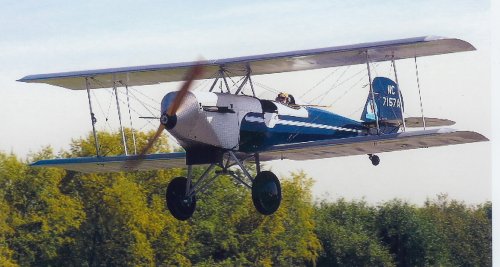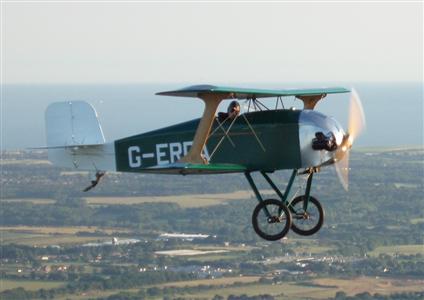

February 15, 2008
Hi Lynn
Many thanks re. Z-1M.
I have a question re. instrument panels. There have been some excellent photos and instrument details recently, covering a wide variety of styles. Historically, what was the most common material used on light european biplane instrument panels constructed in the mid to late 20's Flitzer era and what was the most common finish used?
Building here in france seems to be a delight compared to the UK. The french authorities take a genuine interest in assisting the growth of light/sport aviation...my impression is that they see it as an important part of french history and culture....and it is also fun!
cheers
Jim [Corbett]I suppose that historically, plywood veneered instrument panels were the norm at that time, although often, in WW1, instruments were not always panel mounted but clamped haphazardly to any bit of steel tube or screwed to handy bits of bulkhead in the cockpit or sometimes attached to part-panels only. ASIs and such were less important than engine instruments, water temp, oil pressure, with all manner of brass instruments, oil pulsers, pumps and sometimes wind driven Kolsmann pumps and generators attached to struts, as were the Morrell anemometer ASIs used on many German aeroplanes.
The Ryan NYP and an American Eagle biplane with a Hisso cowling I saw are exceptions where engine turning looked appropriate, but they were much bigger machines and there is more latitude with use of colour and texture when larger areas of another single colour are present to balance the effect.
 |
 |
I regard custom-made aeroplanes as a high art form. That they also fly, and fly well and carry their builder bodily and spiritually aloft is miraculous. Biplanes, indeed most charismatic aeroplanes of the Golden Age (an elastic term as used here) exhude a special aura, a sense of adventure, mystery, with the promise of old skills to be remastered and new ones to be learned. They carry the dust of the ages in their joints and upon their fittings, tell stories of battles won against the elements, the fading light and the too-close call, and each experience seems to have permeated their souls, if souls they have. Their wings will bear you up to view sights that most earthbound men never see, except from the porthole of some tube from Boeing, and for most the scene has made them so blasť that they doze or watch the in-flight film. Solo flight seems sometimes to convey to the pilot a sense of serenity. If he looks behind or infront of him, the Flitzer bears no second 'pit from whence the ghost of his instructor will proffer measured advice so that his fate is literally in his own hands. But it seems sometimes that he is not alone, that he almost moves in a fluid medium in some state of grace. The aeroplane has its own presence, its own personality that the pilot teases out, coaxing this willing horse to do his bidding or follow a whim - to bank and manoeuvre at will. Such flight on wings that you have made, while it lasts, like a solo trek across the Gobi, or scaling Kilimanjairo, represents one of the greatest expressions of endeavor and a sense of such freedom that man can yet experience in a world of encroaching chastisement, surveillance, proscription, political correctness and the heavy pressure guiltily to conform. So it should be beautiful and the craft you fly should be beautiful in its own right, in form and function, colour and texture, and this extends also to the sound it makes. Full throated, clear from its close-proximity pipe tails, not 'fluffy' like a road-going VW! The sky is somewhere that you can breathe still and express yourself in movement, free and wild like a raptor above the earth where Morelocks dwell. :0)
Lynn